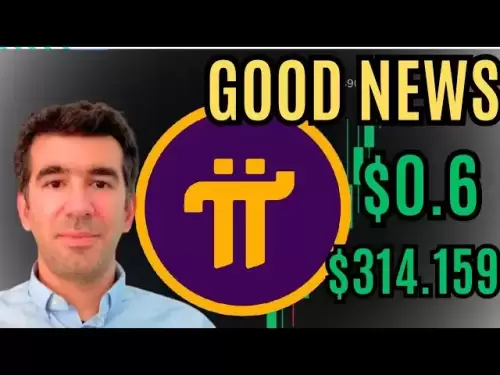-
 Bitcoin
Bitcoin $107,337.4054
-1.63% -
 Ethereum
Ethereum $2,647.1005
-0.75% -
 Tether USDt
Tether USDt $1.0001
-0.02% -
 XRP
XRP $2.2590
-2.59% -
 BNB
BNB $686.9810
-0.28% -
 Solana
Solana $171.1956
-3.20% -
 USDC
USDC $0.9998
0.01% -
 Dogecoin
Dogecoin $0.2196
-3.19% -
 Cardano
Cardano $0.7418
-2.57% -
 TRON
TRON $0.2738
-1.17% -
 Sui
Sui $3.5695
-2.95% -
 Hyperliquid
Hyperliquid $33.6011
-6.91% -
 Chainlink
Chainlink $15.5183
-2.55% -
 Avalanche
Avalanche $23.2215
-0.59% -
 Stellar
Stellar $0.2826
-1.89% -
 UNUS SED LEO
UNUS SED LEO $9.0794
-0.02% -
 Shiba Inu
Shiba Inu $0.0...01415
-2.19% -
 Toncoin
Toncoin $3.3190
10.19% -
 Bitcoin Cash
Bitcoin Cash $411.4902
-1.16% -
 Hedera
Hedera $0.1837
-2.82% -
 Litecoin
Litecoin $95.0625
-0.99% -
 Polkadot
Polkadot $4.5044
-0.94% -
 Monero
Monero $342.4378
-9.41% -
 Bitget Token
Bitget Token $5.2289
-2.25% -
 Pepe
Pepe $0.0...01381
-0.72% -
 Dai
Dai $0.9997
-0.02% -
 Pi
Pi $0.7272
-3.28% -
 Ethena USDe
Ethena USDe $1.0008
0.01% -
 Uniswap
Uniswap $6.6847
3.36% -
 Aave
Aave $262.1465
-4.38%
How to analyze CCI combined with wave theory? What is the effect?
Combining CCI and Elliott Wave Theory enhances trend identification and improves entry/exit points, boosting trader confidence and risk management in crypto markets.
May 26, 2025 at 10:50 am
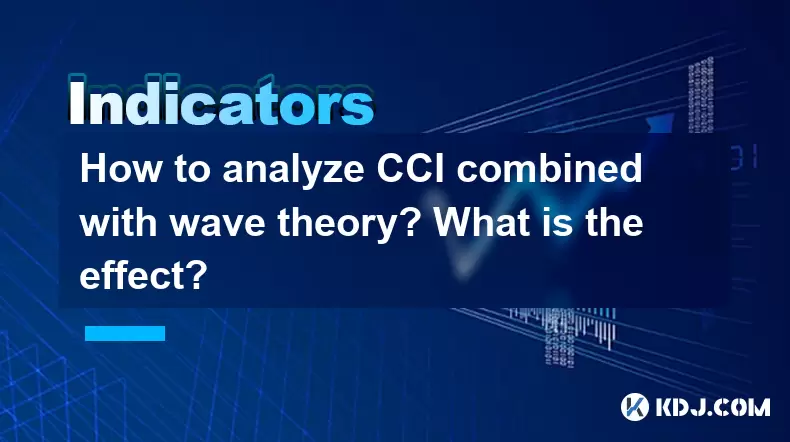
The Commodity Channel Index (CCI) and Elliott Wave Theory are two powerful tools used in technical analysis within the cryptocurrency market. Combining these methods can provide traders with a comprehensive approach to understanding market trends and making informed trading decisions. This article will explore how to analyze the CCI in conjunction with Elliott Wave Theory, detailing the steps involved and the effects of this combined approach.
Understanding the Commodity Channel Index (CCI)
The Commodity Channel Index (CCI) is a versatile indicator used to identify cyclical trends in the price of an asset. It measures the difference between an asset's price change and its average price change, providing insights into overbought and oversold conditions. The CCI is calculated using the following formula:
[ \text{CCI} = \frac{\text{Typical Price} - \text{SMA of Typical Price}}{\text{0.015} \times \text{Mean Deviation}} ]
Where:
- Typical Price is the average of the high, low, and closing prices.
- SMA is the Simple Moving Average.
- Mean Deviation is the mean absolute deviation of the Typical Price from its SMA.
The CCI oscillates around zero, with levels above +100 indicating overbought conditions and levels below -100 indicating oversold conditions. Traders often use the CCI to identify potential reversal points and trend continuations.
Understanding Elliott Wave Theory
Elliott Wave Theory is a method of technical analysis that traders use to predict future price movements by identifying recurring long-term price patterns related to persistent crowd psychology. According to this theory, markets move in repetitive cycles, which are subdivided into impulses and corrections. An impulse consists of five waves, labeled as 1, 2, 3, 4, and 5, while a correction consists of three waves, labeled as A, B, and C.
The Elliott Wave principle helps traders to anticipate the direction of the market by identifying these wave patterns. It is based on the idea that market prices alternate between optimistic and pessimistic sentiments, creating predictable patterns.
Combining CCI and Elliott Wave Theory
To effectively combine the CCI with Elliott Wave Theory, traders need to follow a systematic approach. Here’s how to do it:
Identify Elliott Waves: Start by analyzing the price chart to identify the five-wave impulse and three-wave correction patterns. Use historical data and trend lines to confirm the wave counts.
Apply CCI: Once the waves are identified, overlay the CCI on the price chart. Look for instances where the CCI crosses above +100 or below -100, as these levels can signal potential turning points in the market.
Correlate CCI Signals with Wave Counts: Pay close attention to how the CCI readings align with the Elliott Wave counts. For example, if the CCI crosses above +100 during wave 3, it could indicate a strong bullish trend. Conversely, if the CCI crosses below -100 during wave 2 or wave 4, it might signal a temporary correction.
Confirm Entry and Exit Points: Use the CCI to confirm entry and exit points based on the Elliott Wave counts. For instance, if the CCI indicates an overbought condition at the end of wave 5, it might be a good time to exit a long position. Similarly, if the CCI indicates an oversold condition at the end of wave A, it might be an opportunity to enter a short position.
Practical Example of CCI and Elliott Wave Analysis
Let's consider a practical example using a cryptocurrency like Bitcoin. Suppose you are analyzing a Bitcoin chart and you identify the following Elliott Wave pattern:
- Wave 1: Bitcoin prices rise from $30,000 to $40,000.
- Wave 2: Prices fall back to $35,000.
- Wave 3: Prices surge to $50,000.
- Wave 4: Prices correct to $45,000.
- Wave 5: Prices reach a new high at $55,000.
Now, let's apply the CCI to this scenario:
- During Wave 1: The CCI rises above +100, confirming the bullish trend.
- During Wave 2: The CCI falls below -100, indicating an oversold condition.
- During Wave 3: The CCI again rises above +100, reinforcing the strong bullish trend.
- During Wave 4: The CCI dips below -100, signaling a temporary correction.
- During Wave 5: The CCI reaches a peak above +100, confirming the final push to new highs.
In this example, the CCI provides additional confirmation of the Elliott Wave counts, helping traders to make more confident trading decisions.
Effects of Combining CCI and Elliott Wave Theory
Combining the CCI with Elliott Wave Theory can have several beneficial effects for traders:
Enhanced Trend Identification: By using both methods, traders can more accurately identify the direction and strength of market trends. The CCI helps to confirm the wave counts, reducing the likelihood of misinterpretation.
Improved Entry and Exit Points: The CCI can help traders pinpoint optimal entry and exit points within the Elliott Wave structure. This can lead to more profitable trades and better risk management.
Increased Confidence in Trading Decisions: When the signals from the CCI align with the Elliott Wave counts, traders can have greater confidence in their trading decisions. This can lead to more disciplined and consistent trading.
Better Risk Management: By understanding the potential turning points indicated by the CCI and the wave counts, traders can set more effective stop-loss and take-profit levels, managing their risk more efficiently.
FAQs
Q1: Can the CCI and Elliott Wave Theory be used for short-term trading?
Yes, both the CCI and Elliott Wave Theory can be applied to short-term trading. The CCI can help identify overbought and oversold conditions on shorter timeframes, while Elliott Wave Theory can be used to identify smaller wave patterns within larger trends. However, traders should be aware that shorter timeframes may produce more false signals, requiring a more cautious approach.
Q2: How do I handle conflicting signals between the CCI and Elliott Wave counts?
When the CCI and Elliott Wave counts provide conflicting signals, it is important to consider additional factors such as volume, other technical indicators, and fundamental analysis. If the conflict persists, it may be wise to wait for further confirmation before making a trading decision.
Q3: Is it necessary to use both the CCI and Elliott Wave Theory together, or can they be used independently?
While both the CCI and Elliott Wave Theory can be used independently, combining them can provide a more comprehensive view of the market. Using them together can help confirm signals and reduce the risk of false positives, leading to more reliable trading decisions.
Q4: Can the CCI and Elliott Wave Theory be applied to other financial markets besides cryptocurrencies?
Yes, both the CCI and Elliott Wave Theory can be applied to other financial markets such as stocks, forex, and commodities. The principles remain the same, but traders should be aware of the specific characteristics and volatility of each market when applying these methods.
Disclaimer:info@kdj.com
The information provided is not trading advice. kdj.com does not assume any responsibility for any investments made based on the information provided in this article. Cryptocurrencies are highly volatile and it is highly recommended that you invest with caution after thorough research!
If you believe that the content used on this website infringes your copyright, please contact us immediately (info@kdj.com) and we will delete it promptly.
- XRP Price Holds Strong at Support Ahead of SEC Meeting as Ripple Explores Acquisition of Circle
- 2025-05-29 05:45:13
- APT Miner Launches New Mobile App, Bringing a More Flexible and Convenient Operation Experience to Its Users
- 2025-05-29 05:45:13
- As Cryptocurrency Markets Brace for Another Explosive Bull Run, Investors Weigh Their Options
- 2025-05-29 05:40:15
- Bitcoin Hyper (HYPER) Layer 2 Scaling Solution Promises Near-Instant Transactions
- 2025-05-29 05:40:15
- Catzilla is capturing attention amid the ongoing crypto surge, sparking curiosity about its potential for remarkable growth
- 2025-05-29 05:35:14
- 3 Meme Coins With the Most Potential in 2025
- 2025-05-29 05:35:14
Related knowledge
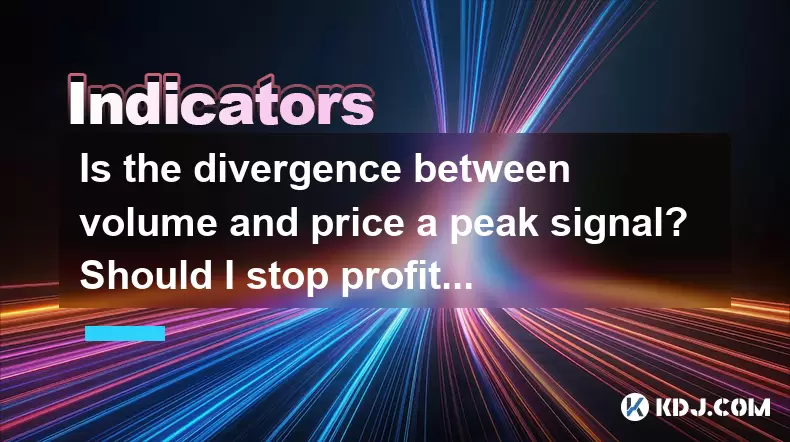
Is the divergence between volume and price a peak signal? Should I stop profit or hold?
May 29,2025 at 04:43am
Is the divergence between volume and price a peak signal? Should I stop profit or hold? In the world of cryptocurrencies, traders often look for signals that can indicate potential peaks or troughs in market trends. One such signal that traders frequently monitor is the divergence between volume and price. This phenomenon occurs when the trading volume ...
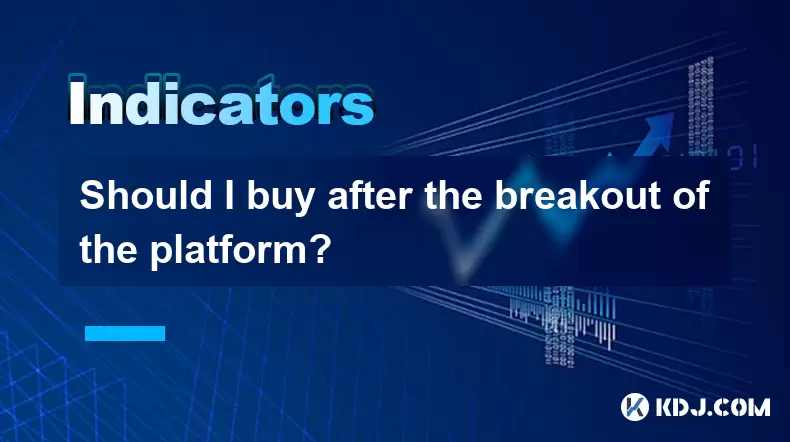
Should I buy after the breakout of the platform?
May 29,2025 at 04:35am
Understanding Breakouts in CryptocurrencyBreakouts in the cryptocurrency market occur when the price of a digital asset moves above a defined resistance level or below a support level, often leading to increased volatility and trading activity. A breakout can signal the start of a new trend, either bullish or bearish, depending on the direction of the p...
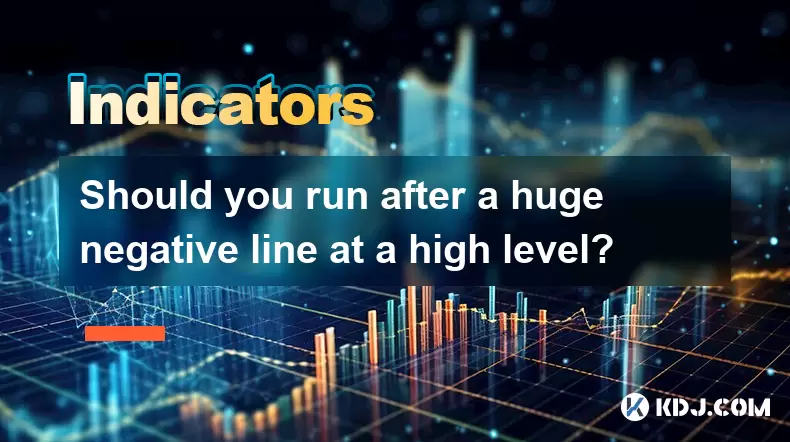
Should you run after a huge negative line at a high level?
May 29,2025 at 04:21am
Should you run after a huge negative line at a high level? When navigating the volatile world of cryptocurrencies, one of the most challenging decisions traders face is whether to chase a significant price drop after a high. A huge negative line at a high level often signals a sharp reversal in market sentiment, and understanding how to react to such mo...
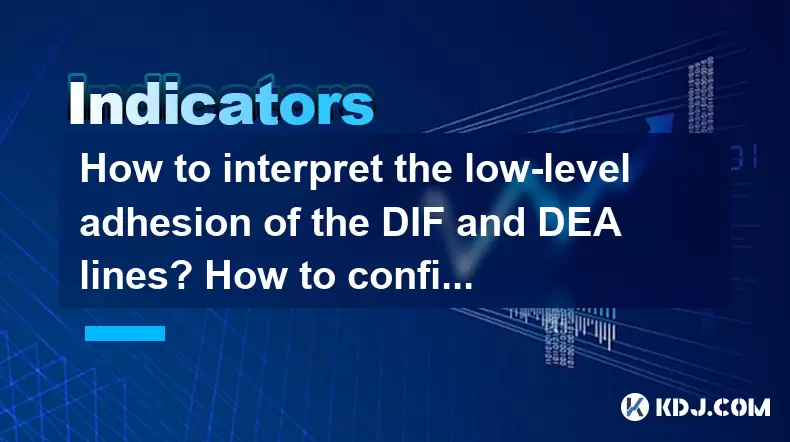
How to interpret the low-level adhesion of the DIF and DEA lines? How to confirm the direction selection signal?
May 29,2025 at 02:49am
Understanding the low-level adhesion of the DIF and DEA lines in the context of cryptocurrency trading involves delving into the specifics of the Moving Average Convergence Divergence (MACD) indicator. The MACD is a trend-following momentum indicator that shows the relationship between two moving averages of a cryptocurrency's price. The DIF line, also ...
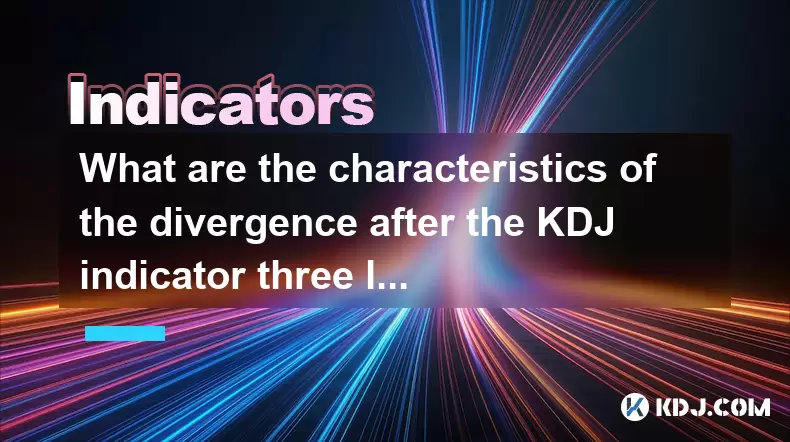
What are the characteristics of the divergence after the KDJ indicator three lines merge into one? What are the direction selection signals?
May 29,2025 at 03:14am
The KDJ indicator is a popular tool used in the cryptocurrency trading community to identify potential trend reversals and to gauge the momentum of price movements. When the three lines of the KDJ indicator—namely the K line, D line, and J line—merge into one, it often signifies a significant event in the market. This phenomenon is known as a divergence...
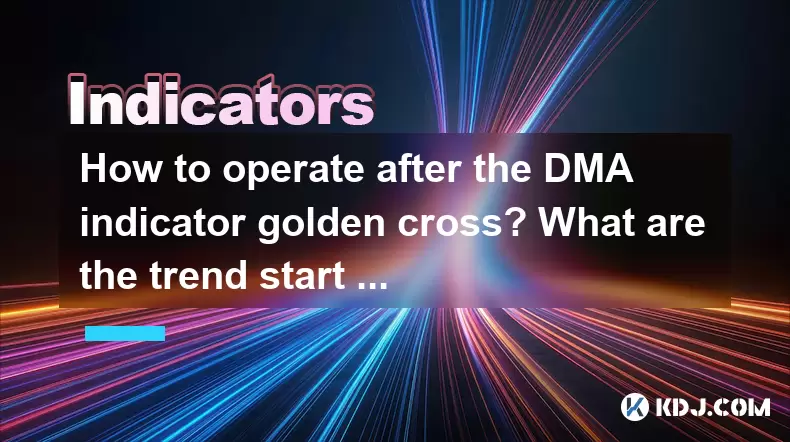
How to operate after the DMA indicator golden cross? What are the trend start signals?
May 29,2025 at 12:21am
How to Operate After the DMA Indicator Golden Cross? What Are the Trend Start Signals? The DMA (Dual Moving Average) indicator is a popular tool among cryptocurrency traders for identifying potential trend changes and entry points. A golden cross on the DMA indicator occurs when a shorter-term moving average crosses above a longer-term moving average, s...

Is the divergence between volume and price a peak signal? Should I stop profit or hold?
May 29,2025 at 04:43am
Is the divergence between volume and price a peak signal? Should I stop profit or hold? In the world of cryptocurrencies, traders often look for signals that can indicate potential peaks or troughs in market trends. One such signal that traders frequently monitor is the divergence between volume and price. This phenomenon occurs when the trading volume ...

Should I buy after the breakout of the platform?
May 29,2025 at 04:35am
Understanding Breakouts in CryptocurrencyBreakouts in the cryptocurrency market occur when the price of a digital asset moves above a defined resistance level or below a support level, often leading to increased volatility and trading activity. A breakout can signal the start of a new trend, either bullish or bearish, depending on the direction of the p...

Should you run after a huge negative line at a high level?
May 29,2025 at 04:21am
Should you run after a huge negative line at a high level? When navigating the volatile world of cryptocurrencies, one of the most challenging decisions traders face is whether to chase a significant price drop after a high. A huge negative line at a high level often signals a sharp reversal in market sentiment, and understanding how to react to such mo...

How to interpret the low-level adhesion of the DIF and DEA lines? How to confirm the direction selection signal?
May 29,2025 at 02:49am
Understanding the low-level adhesion of the DIF and DEA lines in the context of cryptocurrency trading involves delving into the specifics of the Moving Average Convergence Divergence (MACD) indicator. The MACD is a trend-following momentum indicator that shows the relationship between two moving averages of a cryptocurrency's price. The DIF line, also ...

What are the characteristics of the divergence after the KDJ indicator three lines merge into one? What are the direction selection signals?
May 29,2025 at 03:14am
The KDJ indicator is a popular tool used in the cryptocurrency trading community to identify potential trend reversals and to gauge the momentum of price movements. When the three lines of the KDJ indicator—namely the K line, D line, and J line—merge into one, it often signifies a significant event in the market. This phenomenon is known as a divergence...

How to operate after the DMA indicator golden cross? What are the trend start signals?
May 29,2025 at 12:21am
How to Operate After the DMA Indicator Golden Cross? What Are the Trend Start Signals? The DMA (Dual Moving Average) indicator is a popular tool among cryptocurrency traders for identifying potential trend changes and entry points. A golden cross on the DMA indicator occurs when a shorter-term moving average crosses above a longer-term moving average, s...
See all articles
























